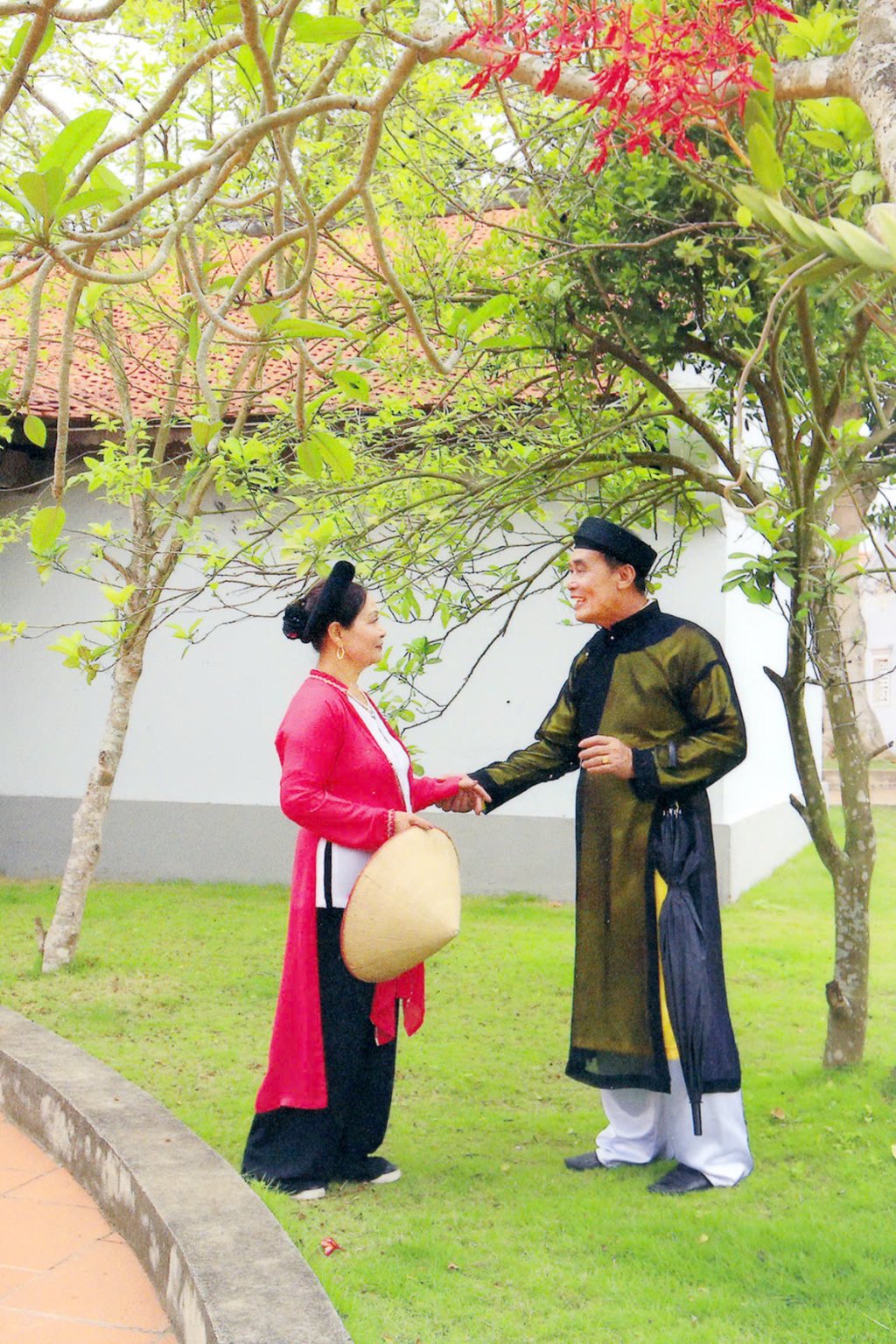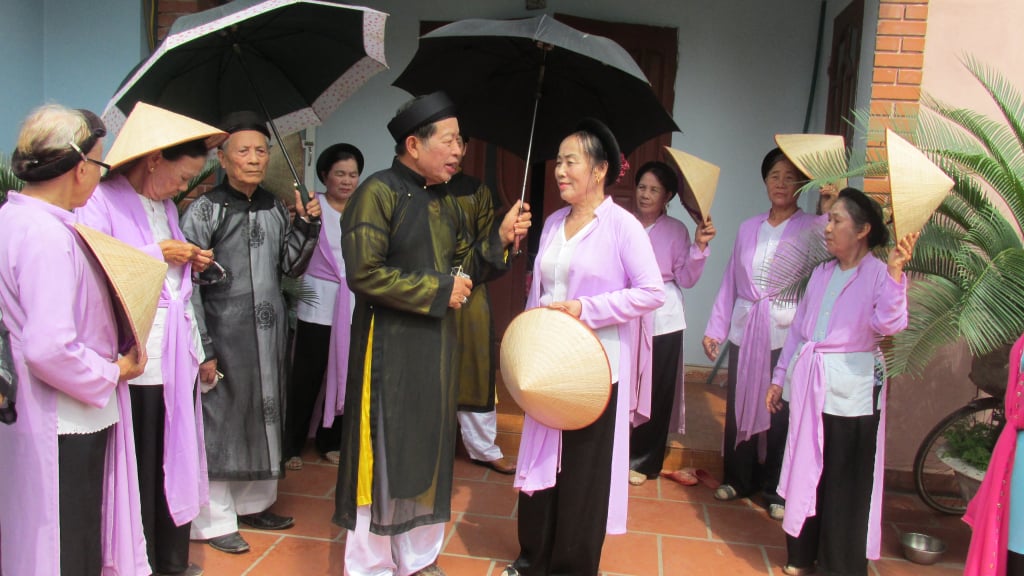In spring, coming to Ha Nam island village (Quang Yen town) and listening to the folk songs, visitors will understand and love more about the land and people here.

According to historical records, Ha Nam Island was once a large tidal flat at the mouth of the Bach Dang River, but its population was sparse and scattered. Meanwhile, the protection of dykes, irrigation and agricultural seasons required high levels of connection and unity. Due to the need to unite the community, the ancient residents created folk songs, including duets. Therefore, at the beginning and end of each singing session, the artist would begin with the phrase: "Duyen ket ban minh oi!". The song helped them find friends to form guilds to cooperate in labor. The song also helped them forget the hardships of life struggling with wind, sun, rain, tides, and drought.
Over the generations, the song has been continuously supplemented, edited, and enriched by anonymous folk artists. From the song during work, rest, and the festival of singing dum, it gradually became a way of singing love songs, making lifelong friendships of farmers and fishermen who work hard to the sea and the fields of their homeland. Therefore, the song dum, from the beginning of "Duyen ket ban minh oi" was sung as "Duyen ket ban tinh oi!".

Regarding the unique singing tune, there is only one tune, sung in the past without accompaniment, the lyrics are folk compositions passed down orally from many generations, each generation, each singer sometimes adds or subtracts a little, edits according to their own ideas, compared to other folk tunes, this difference has created its own unique features, very charming unique features, suitable for rich and diverse real life.
Meritorious Artist Thanh Quyet, member of the Vietnam Association of Folk Artists, Chairman of the Quang Yen Dum Singing Club, said: In terms of form, dum singing is usually performed by one man and one woman, called giao duyen or tong nam, tong nu, often taking place in spring festivals, during production labor in the fields or on rivers and seas. The word "Dum" refers to the number of people in a group or a group of 5 to 10 people, the response singing in a group can be when they have just met or met for the first time, people sing greetings like a brief introduction about themselves, at the same time wishing to make friends. For example: "That fate makes friends, my dear/ I greet the spring festival/ I greet all the guests from near and far sitting around...".

According to Ms. Thanh Quyet, the lyrics begin with the phrase "Duyen ket ban minh oi" and end with the same as a signal to call each other to sing. Those are interjected, interspersed lyrics, not part of the content. But in fact, according to the above analysis, the nature of making friends, whether "minh oi" or "tinh oi", all show the collective love-making style of dum singing.
Because of the function of making friends and the depth of the lyrics, duets attract participants, especially the young men and women of the past. Normally, they can sing on the riverbank, in the fields, or in the village hall. Duets are organized in spring festivals to be romantic, organized, and in a solemn place. In particular, the singers do not add vulgar or obscene lyrics, and sing in a way that is worthy of a gentleman. In spring festivals, many young men and women sing duets so passionately that they forget about the day and night. From their love of singing, they fall in love with each other and become husband and wife.
In fact, the duet singing lasts long because of the nature of the dialogue, with each side singing riddles and one side solving riddles. Because of that competition, the singers need the ability to respond and need a lot of capital. However, whether they win or lose in the singing, no one is sad because the longer the singing lasts, the more time they have to get to know each other. The more they sing, the more opportunities they have to choose their soul mate. Therefore, every time they say goodbye to their friends, the duet singing is always full of affection and nostalgia. The party has ended, but those who stay and those who go cannot bear to part with each other.
According to Meritorious Artist Thanh Quyet, the lyrics of the dum song are as simple as the flowers of the wild grass but also as sincere as the nature of the villagers in the countryside. It is a song that contains many stories in profound traditional culture, which needs to continue to be respected, preserved and conserved.
Source


![[Photo] "Beauties" participate in the parade rehearsal at Bien Hoa airport](https://vstatic.vietnam.vn/vietnam/resource/IMAGE/2025/4/11/155502af3384431e918de0e2e585d13a)




![[Photo] Looking back at the impressive moments of the Vietnamese rescue team in Myanmar](https://vstatic.vietnam.vn/vietnam/resource/IMAGE/2025/4/11/5623ca902a934e19b604c718265249d0)





















![[Photo] Summary of parade practice in preparation for the April 30th celebration](https://vstatic.vietnam.vn/vietnam/resource/IMAGE/2025/4/11/78cfee0f2cc045b387ff1a4362b5950f)























































Comment (0)